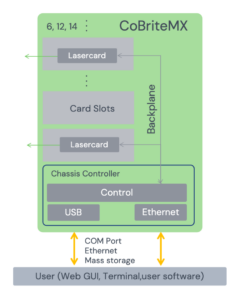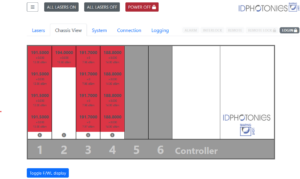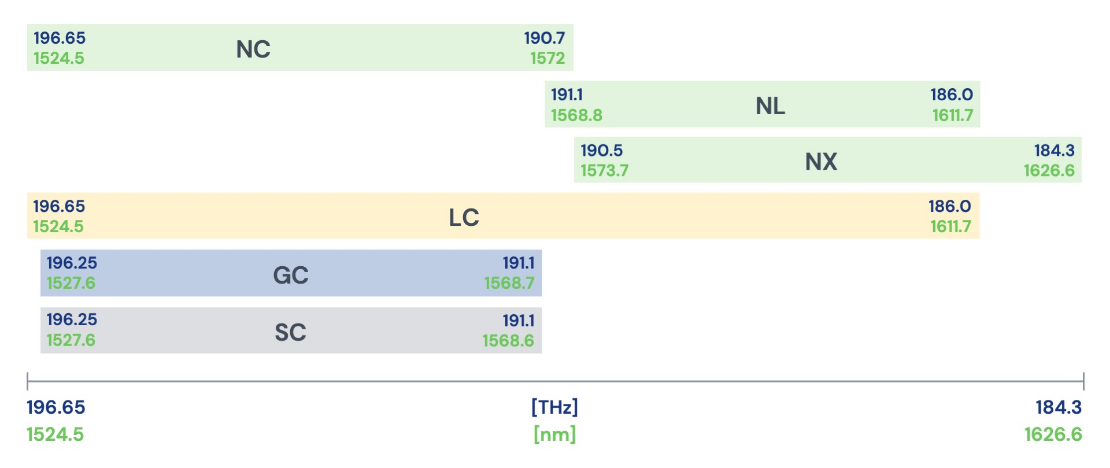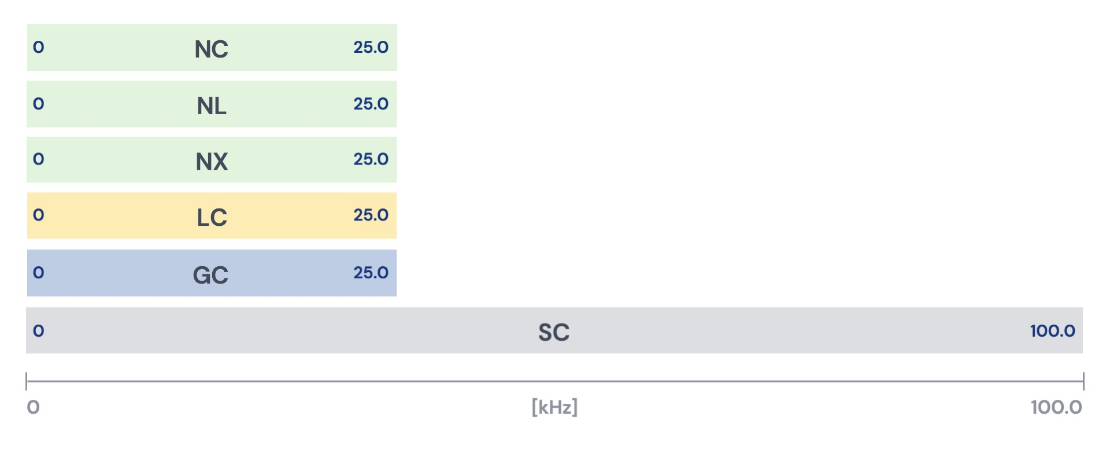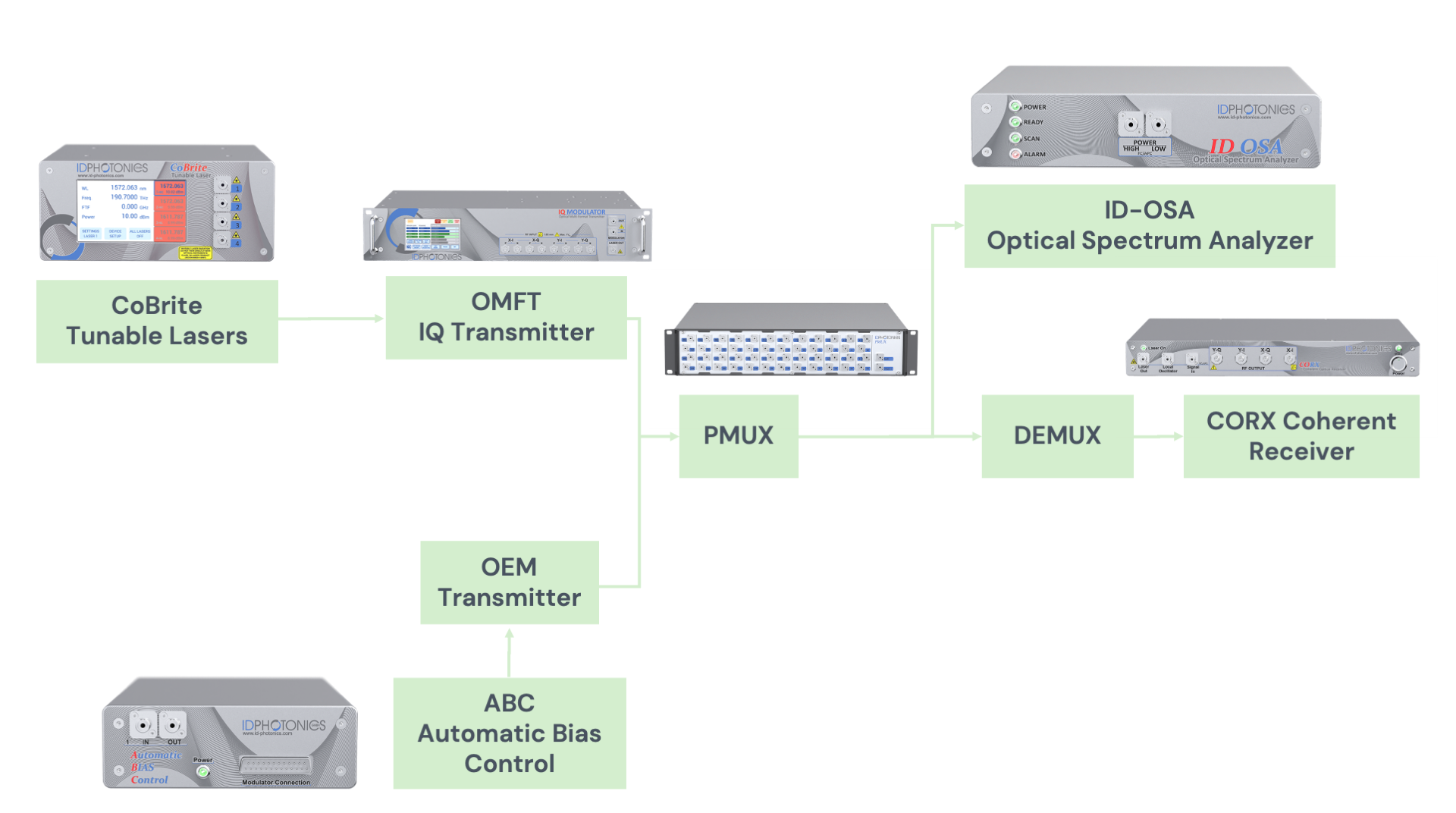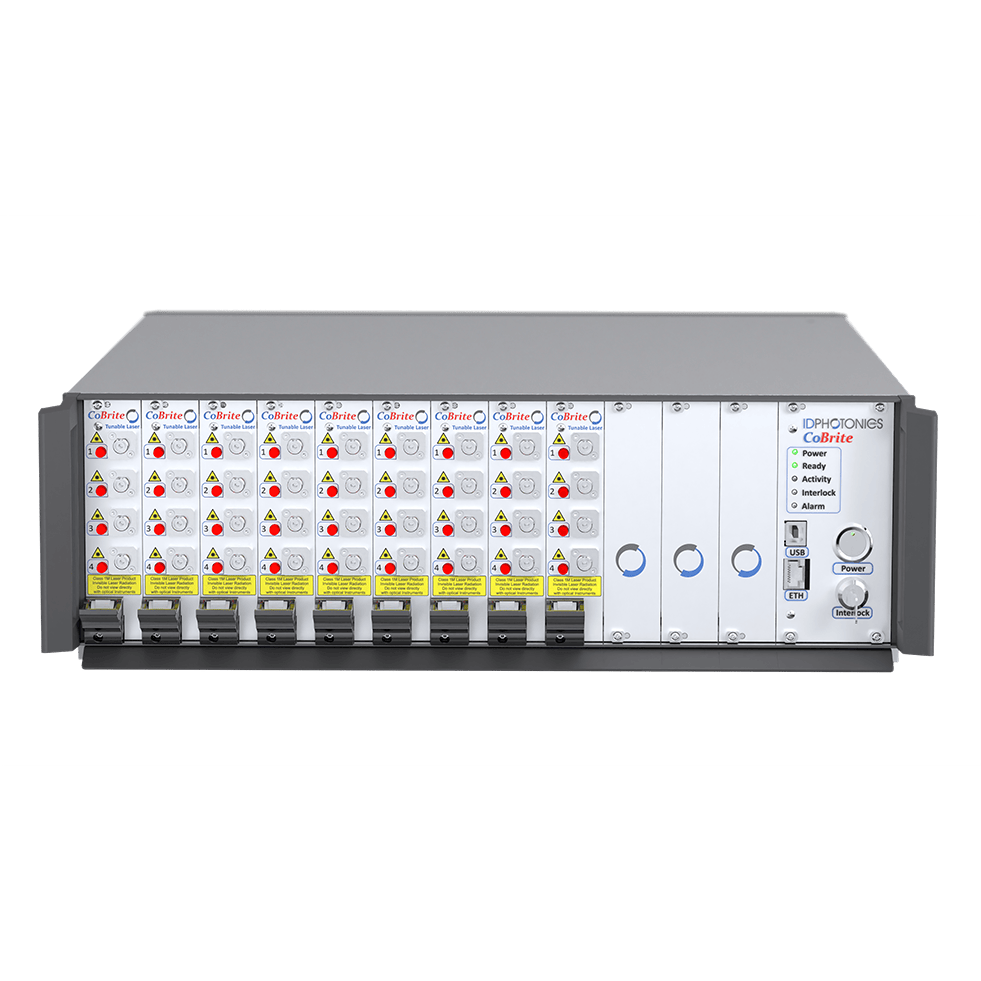
Tunable Laser Sources
CoBrite MX
The CoBrite MX series is a 19-inch mainframe-based system that uses slide-in cards, each housing up to 4 CoBrite lasers. This setup offers flexibility to the user to adjust to any required channel count in the field. Scalable in the field, from 2 lasers to up to 48 lasers within a single platform, the CoBrite MX provides a solution for various needs – from low channel count testing to full DWDM channel grid emulation applications. Two chassis variants available with 24 or 48 laser port capacity.
Key features
- 19-inch rack mountable chassis platform, 3HE
- Scalable from 2 lasers to 48 lasers per chassis
- Field-swappable cards and central controller
- 5 different laser types to choose from
- Remote control with browser-based GUI via USB and 2 Ethernet ports
Typical Applications
- Low channel count testing up to full DWDM channel grid loading
- Coherent transmission
- Local oscillator
- Research of advanced modulation formats
- Transmission experiments, large network emulation
- DWDM EDFA testing
CoBrite laser tuning principle
Coarse tuning mode description
This tuning mode enables laser frequency adjustment across the specified range for the laser port. During the tuning process, the output gets briefly disabled.
Tuning Process Description:
- Output is switched off.
- Output is re-activated using the new frequency.
- Power is gradually increased until the final output power is attained. Maximum tuning durations vary by laser type; consult the specifications for specifics.
- Power stabilizes, completing the tuning process.
Fine tuning principle
Fine tuning permits laser-detuning within a narrow range from the target frequency set by the coarse tuning parameter. During the tuning process, the laser will detune to the target setting with output power active, changing the output frequency in a linear ramp. Tuning resolution depends on the laser type; please refer to the specifications of the different laser types.
Tuning Process:
- Tuning is initiated.
- Tuning process speed depends on the laser type and takes approx. 0.5 to 10 seconds per GHz.
- Power remains constant throughout the process; laser settles on the new value.
CoBrite Overview Chassis and Types
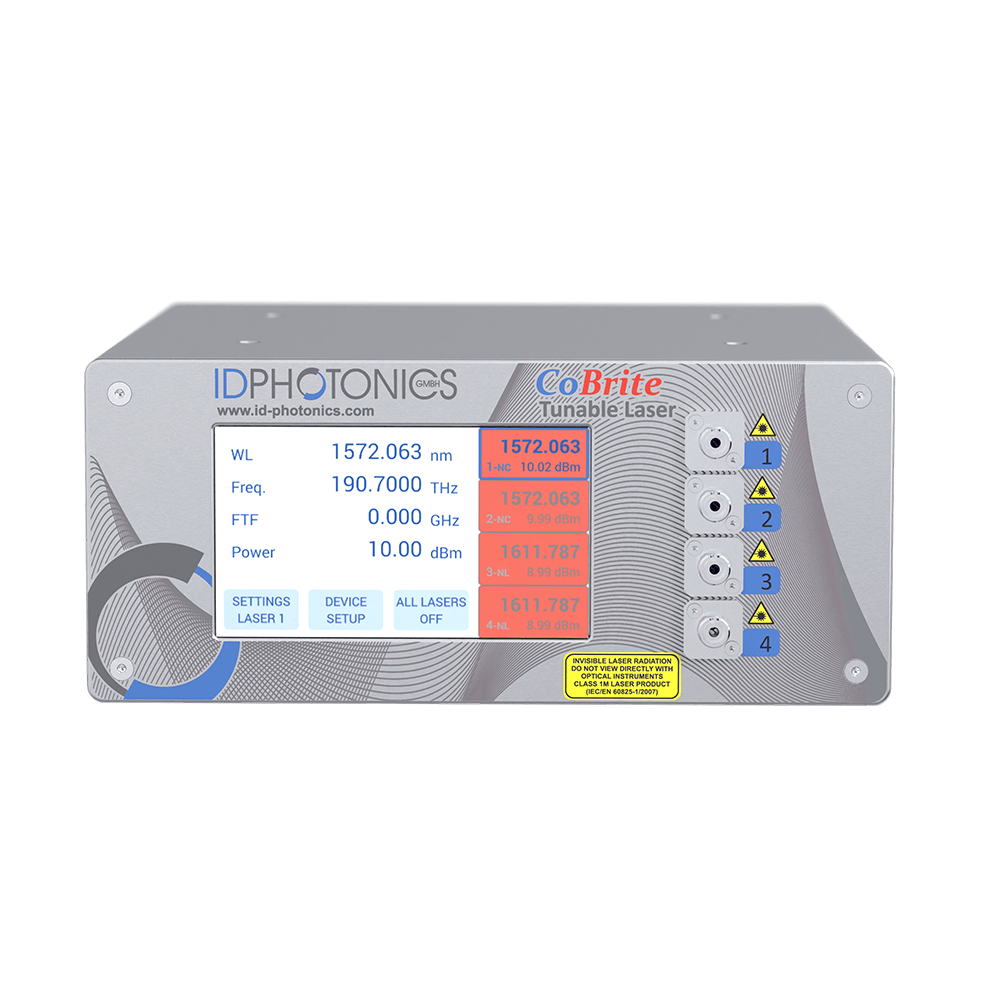
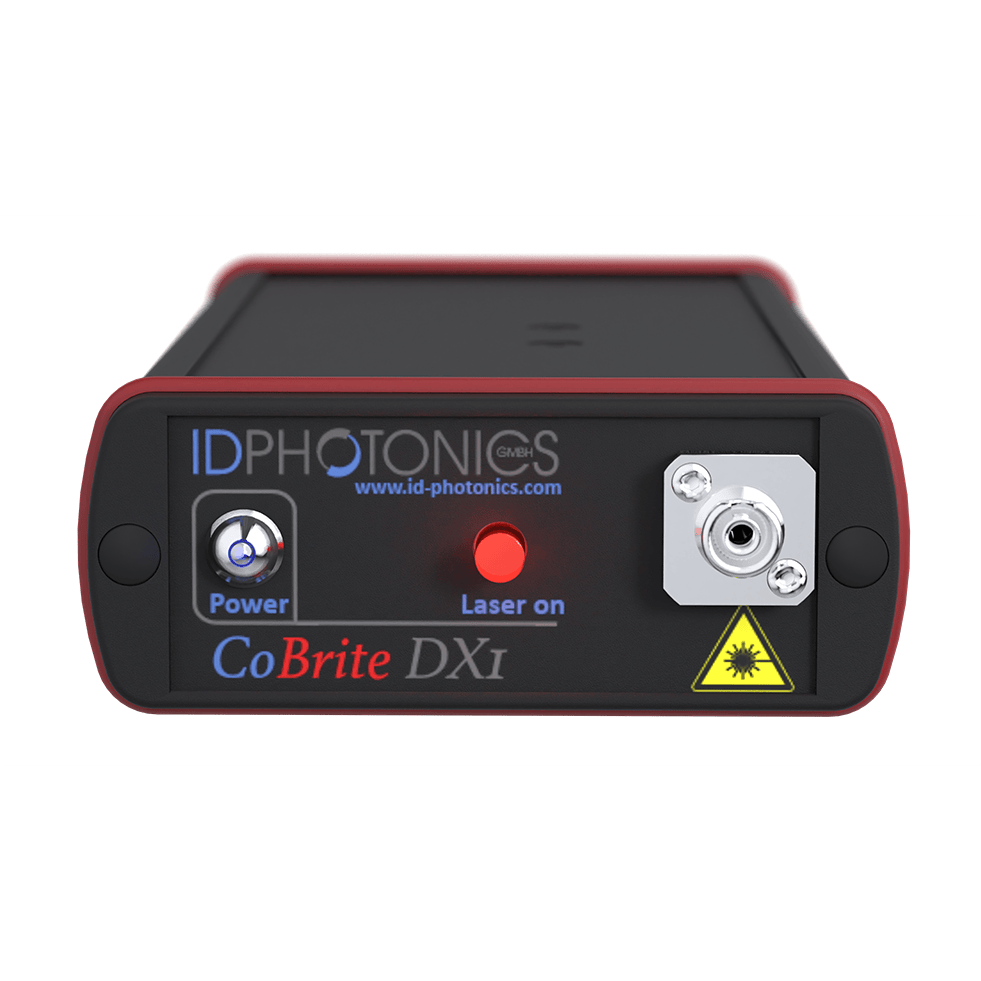


Compare the chassis options
Easily compare all our chassis options in the carousel, ranging from a handy benchtop module to a highly scalable 19-inch mainframe-based system.
Compare the laser types
NX types, LC type, SC Type, GC Type
